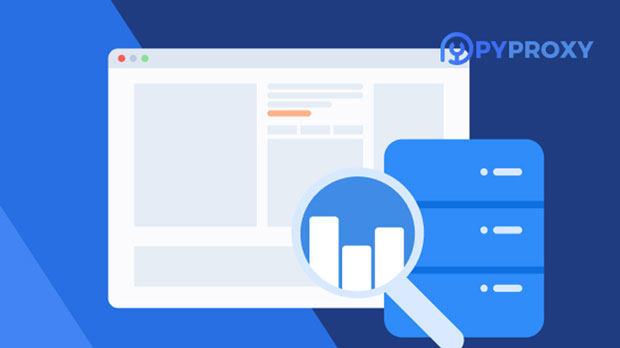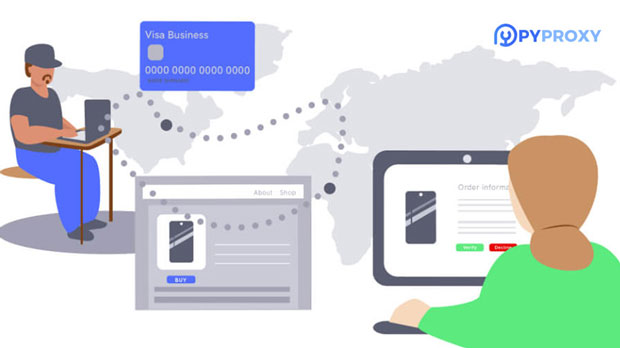How Windows Socks5 Proxy Server Works in Detail
A Windows socks5 proxy server is a type of proxy service that allows users to send requests through an intermediary server to access resources on the internet while maintaining privacy and anonymity. The Socks5 protocol is an advanced version of the SOCKS protocol, offering enhanced features like better support for various protocols (such as UDP), handling both TCP and UDP traffic, and providing a higher level of security. This article explores the detailed working mechanism of a Windows socks5 proxy server, focusing on its functionality, technical aspects, and real-world applications. Understanding the Socks5 Proxy ProtocolTo comprehend how a Windows Socks5 proxy server works, it's essential to first understand the basic principles of the SOCKS (Socket Secure) protocol. SOCKS is a network protocol that routes network packets between a client and a server through a proxy server, effectively hiding the client’s IP address and providing a layer of anonymity. The primary purpose of SOCKS proxies, including Socks5, is to facilitate internet access while masking the origin of requests.The Socks5 protocol improves upon its predecessor (Socks4) by supporting both TCP and UDP traffic, enhancing security through authentication methods, and enabling greater flexibility with various networking features. Unlike other types of proxies, such as HTTP proxies, Socks5 does not modify or inspect the data transmitted between the client and the server, which allows for a more diverse range of use cases, such as supporting peer-to-peer applications or VoIP calls.How a Windows Socks5 Proxy Server OperatesA Windows Socks5 proxy server functions as an intermediary between a client (typically running on a Windows operating system) and the internet. When a client wants to access a specific website or service, it sends a request to the Socks5 proxy server. Here’s a step-by-step breakdown of how the process works:1. Client Request: The client initiates a request to access a remote service, such as a website. The request is routed through the Socks5 proxy server rather than directly accessing the destination server.2. Authentication (Optional): If the Socks5 server requires authentication, the client must provide valid credentials (such as a username and password) to gain access. This step is optional, depending on the server’s configuration.3. Protocol Negotiation: Once the connection is established, the client and the proxy server perform a handshake to negotiate the type of communication protocol to be used. This negotiation ensures compatibility between the client and the server, and the proxy server can handle both TCP and UDP traffic.4. Data Forwarding: After the protocol negotiation, the proxy server forwards the client’s request to the destination server, acting as a relay. The server receives the request and returns the response data back to the proxy server, which, in turn, sends it back to the client.5. Response Transmission: The response from the destination server is transmitted back through the proxy server and delivered to the client. Throughout this entire process, the client’s IP address remains concealed, as the proxy server’s IP address is used instead.Key Features of a Windows Socks5 Proxy ServerA Windows Socks5 proxy server offers several key features that distinguish it from other proxy types, such as HTTP proxies or SOCKS4 proxies. These features make Socks5 particularly valuable for certain use cases:1. Support for Multiple Protocols: Socks5 is capable of handling both TCP and UDP protocols, making it more versatile compared to earlier versions of SOCKS that only supported TCP. This ability allows socks5 proxies to support a wide range of internet activities, including streaming media, gaming, and peer-to-peer (P2P) file sharing.2. Enhanced Security: Socks5 offers better security through its support for authentication. Users can configure the server to require a username and password, ensuring that only authorized clients can access the server. Additionally, Socks5 does not manipulate or inspect the data, making it less vulnerable to potential security breaches compared to other proxies.3. No Data Modification: One of the defining characteristics of the Socks5 protocol is that it does not alter the data that is being transmitted between the client and the destination server. This is particularly important for applications that require secure, unmodified data transmission, such as VPNs or encrypted communication tools.4. High Anonymity: By masking the client’s IP address, a Socks5 proxy server helps maintain anonymity while browsing the internet. This can be essential for users who need to protect their privacy, such as when accessing content that may be restricted based on geographical location or when attempting to avoid tracking by websites.5. Flexibility: Unlike HTTP proxies, which are designed primarily for web browsing, Socks5 proxies can be used with a wide variety of applications and services. Whether it’s a VoIP call, a file-sharing session, or an online game, Socks5 can handle diverse types of traffic.Common Use Cases for Windows Socks5 Proxy ServersDue to its versatile nature, a Windows Socks5 proxy server can be applied in several real-world scenarios. Below are some common use cases:1. Privacy and Anonymity: Many users rely on Socks5 proxies to enhance their privacy and avoid surveillance. By masking the client’s IP address, the Socks5 proxy ensures that the user’s online activities are more difficult to trace, protecting sensitive personal data from being exposed.2. Bypassing Geographical Restrictions: Socks5 proxies can be used to circumvent geo-blocked content. For example, if a website or online service is restricted to certain countries, users can connect to a Socks5 server located in a different region to access that content.3. Secure Online Transactions: Users conducting sensitive activities, such as online banking or accessing secure services, may use Socks5 proxies to add an extra layer of security. By routing their connections through a Socks5 server, they can protect themselves from potential security threats, including man-in-the-middle attacks.4. Accessing P2P Networks and Torrenting: The ability of Socks5 proxies to handle both TCP and UDP protocols makes them a popular choice for P2P file sharing and torrenting. Unlike HTTP proxies, which may struggle with large file transfers, Socks5 proxies can effectively manage these types of high-bandwidth activities.Benefits and Limitations of Using a Windows Socks5 Proxy ServerWhile Windows Socks5 proxy servers offer numerous benefits, they also come with certain limitations that should be considered before deployment.Benefits:- Improved Security and Anonymity: Socks5 enhances security and user privacy, making it a preferred choice for those seeking to protect their identity online.- Support for a Wide Range of Applications: From web browsing to gaming and P2P file sharing, Socks5 can handle various traffic types, providing flexibility for different use cases.- No Data Modification: Socks5 ensures that the data remains unmodified, preserving the integrity of the transmitted information.Limitations:- No Encryption: Unlike VPNs, Socks5 proxies do not provide encryption for the data. Therefore, while they provide anonymity, they do not guarantee complete security unless paired with an encryption layer.- Possible Slower Speeds: Depending on the proxy server’s location and load, there may be an impact on internet speeds, especially for bandwidth-intensive activities like video streaming.ConclusionThe Windows Socks5 proxy server is a powerful tool for improving internet security, privacy, and flexibility. By enabling users to route their internet traffic through a proxy server, it helps mask their IP address and prevent unauthorized access to their data. Its support for both TCP and UDP protocols, combined with robust security features and high versatility, makes it suitable for a wide range of applications, including secure browsing, bypassing geo-restrictions, and peer-to-peer networking. However, it’s important to remember that while Socks5 enhances anonymity, it does not provide encryption, and therefore, additional security measures may be necessary for sensitive activities. Understanding these nuances can help users leverage the full potential of Socks5 proxies in various scenarios.
2024-12-30
























































